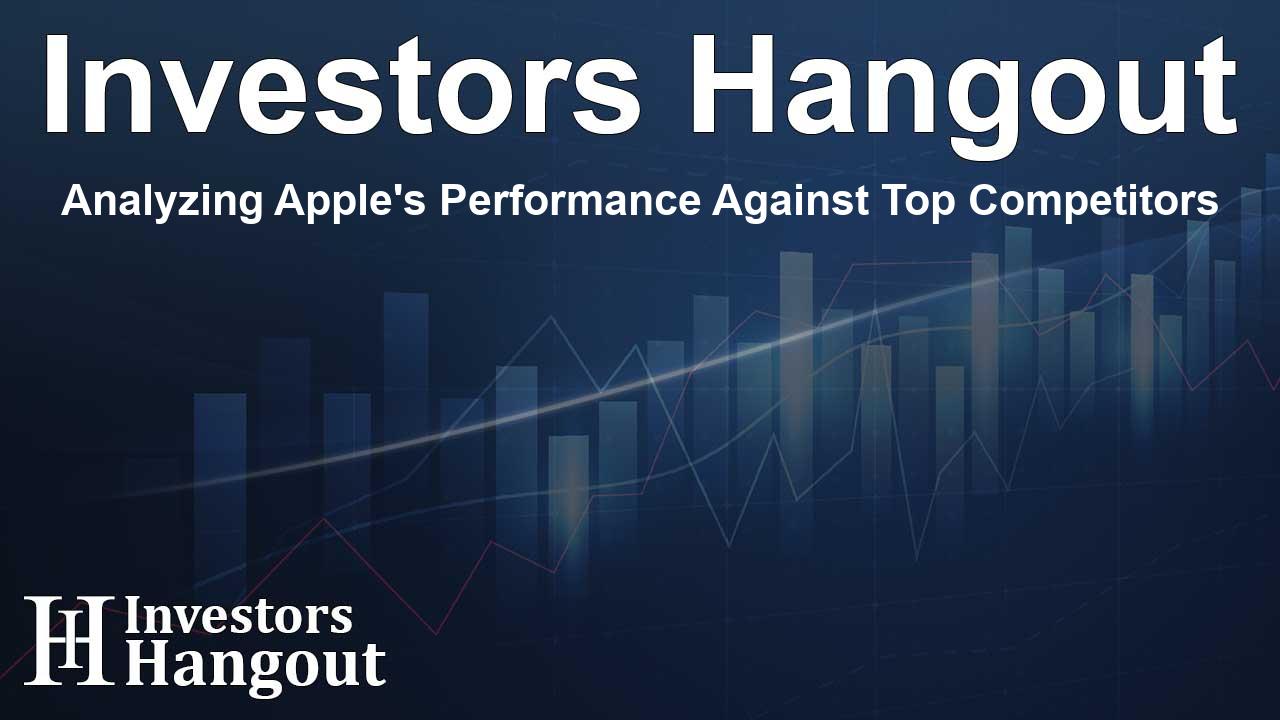Analyzing Apple's Performance Against Top Competitors

Understanding Apple's Competitive Edge
In today's rapid business environment, it is essential for investors and market observers to perform thorough evaluations of companies. This article provides a comprehensive comparison of Apple Inc (NASDAQ: AAPL) with its significant competitors in the Technology Hardware, Storage & Peripherals sector. By examining crucial financial metrics, market positions, and future growth opportunities, we aim to deliver meaningful insights into Apple's standing within the industry.
Apple's Industry Landscape
Apple is widely recognized as one of the largest corporations globally, offering a diverse range of hardware and software solutions aimed at consumers and enterprises alike. The company's flagship product, the iPhone, represents a substantial segment of its sales, while other offerings like the Mac, iPad, and Watch are intricately linked to this expanding software ecosystem. Over the years, Apple has consistently innovated by introducing various applications, including video streaming services, entertainment bundles, and advancements in augmented reality. The company not only develops its own software and chip technology but also collaborates with contract manufacturers to produce its products. Remarkably, nearly half of Apple's revenue originates from its retail operations, with significant contributions from partnerships and distribution channels.
Key Financial Metrics
When delving into critical financial statistics of Apple and its main competitors, we observe the following:
| Company | P/E | P/B | P/S | ROE | EBITDA (in billions) | Gross Profit (in billions) | Revenue Growth |
|---|---|---|---|---|---|---|---|
| Apple Inc | 33.10 | 47.51 | 8.07 | 37.11% | $32.25 | $44.87 | 5.08% |
| Super Micro Computer Inc | 27.99 | 4.82 | 1.50 | 1.72% | $0.14 | $0.44 | 19.48% |
| Hewlett Packard Enterprise Co | 19.87 | 1.14 | 0.87 | -4.40% | $0.87 | $2.17 | 5.87% |
| Western Digital Corp | 23.54 | 4.63 | 1.55 | 5.86% | $0.28 | $0.91 | 30.94% |
| NetApp Inc | 18.95 | 20.70 | 3.42 | 33.42% | $0.43 | $1.19 | 3.84% |
| Pure Storage Inc | 150.03 | 14.98 | 6.02 | -1.10% | $0.04 | $0.54 | 12.26% |
| Eastman Kodak Co | 13.85 | 0.95 | 0.57 | -1.66% | $0.02 | $0.05 | -0.80% |
| Turtle Beach Corp | 17.66 | 2.18 | 0.72 | -0.55% | $0.00 | $0.02 | 14.42% |
| Average | 38.84 | 7.06 | 2.09 | 4.76% | $0.25 | $0.76 | 12.29% |
Analyzing Key Trends
When scrutinizing Apple's metrics, several trends become evident:
- Apple's Price to Earnings (P/E) ratio stands at 33.1, lower than the industry average by 0.85x, suggesting a robust potential for growth.
- The high Price to Book (P/B) ratio of 47.51 indicates that the company may be perceived as overvalued by 6.73x compared to its book value.
- With a Price to Sales (P/S) ratio of 8.07, which exceeds the industry average by 3.86x, there are indications of potential overvaluation based on sales.
- The Return on Equity (ROE) at 37.11% substantially outperforms the industry by 32.35%, reflecting effective equity utilization to generate profits and a strong growth outlook.
- Apple's EBITDA of $32.25 billion showcases impressive profitability, being 129.0x greater than the average.
- The significant gross profit of $44.87 billion indicates Apple's superior earnings capabilities in its core operations.
- Despite these strengths, the revenue growth rate of 5.08% trails the industry average of 12.29%, indicating challenges in increasing sales volume.
Debt-to-Equity Insights
The debt-to-equity (D/E) ratio is a vital indicator of a company's financial health and reliance on debt financing. In comparing Apple's D/E ratio with its leading peers, key observations arise:
- Apple has a D/E ratio of 1.47, placing it in the mid-range among its closest competitors.
- This ratio suggests a fairly balanced financial structure, maintaining a sensible mix of debt and equity.
Conclusions
As we analyze Apple within the Technology Hardware, Storage & Peripherals sector, the lower P/E ratio relative to others indicates possible undervaluation. Meanwhile, the elevated P/B and P/S ratios affirm strong market expectations regarding Apple's asset and sales values. The company's impressive ROE, EBITDA, and gross profit metrics highlight robust profitability, though the underlying revenue growth suggests it faces hurdles in expanding its sales efforts compared to its contemporaries.
Frequently Asked Questions
What is Apple Inc's stock ticker?
Apple Inc's stock ticker is AAPL, traded on the NASDAQ exchange.
How does Apple compare to its competitors financially?
Apple typically shows strong profitability metrics, although its revenue growth trails behind the industry average.
What does a high Price to Earnings ratio indicate?
A high P/E ratio may suggest that a stock is overvalued or that investors expect high growth rates in the future.
What is the significance of the debt-to-equity ratio?
The debt-to-equity ratio provides insight into a company's financial leverage and overall financial stability.
How important is revenue growth for assessing a company?
Revenue growth is crucial for determining a company's ability to expand its market share and maintain competitive advantage.
About The Author
Contact Caleb Price privately here. Or send an email with ATTN: Caleb Price as the subject to contact@investorshangout.com.
About Investors Hangout
Investors Hangout is a leading online stock forum for financial discussion and learning, offering a wide range of free tools and resources. It draws in traders of all levels, who exchange market knowledge, investigate trading tactics, and keep an eye on industry developments in real time. Featuring financial articles, stock message boards, quotes, charts, company profiles, and live news updates. Through cooperative learning and a wealth of informational resources, it helps users from novices creating their first portfolios to experts honing their techniques. Join Investors Hangout today: https://investorshangout.com/
The content of this article is based on factual, publicly available information and does not represent legal, financial, or investment advice. Investors Hangout does not offer financial advice, and the author is not a licensed financial advisor. Consult a qualified advisor before making any financial or investment decisions based on this article. This article should not be considered advice to purchase, sell, or hold any securities or other investments. If any of the material provided here is inaccurate, please contact us for corrections.
